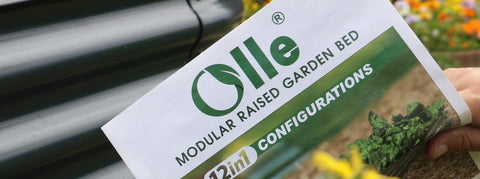Tips from Olle Garden Bed: Watering your garden
How you do this can make a difference. The following content also has some reference value for raised garden beds.

How much water is too much? Too little How much? Although water is essential for any garden plant, soil, humidity, sunlight and other factors will also make a great difference. Clay is best kept moist, but it takes a long time to absorb. Sandy soil absorbs water very quickly, but cannot hold too much. Your soil should contain enough organic matter to hold water and still allow air to reach the roots of the plant. Always try watering in the morning to keep the leaves dry all day and reduce disease.
Different needs of different plants
What you plant will also determine how much water you need. The root depth varies greatly. After a good season, tomato roots can reach 2 feet deep, while lettuce roots may only be 1 foot deep. Other plants have shorter roots. If possible, try to remember how deep the roots of your different plants are. Plants with deeper roots usually find more water in the soil.
Look at the weather
You must also remember the evaporation rate. Hot, dry and windy days absorb water in the soil faster than static and wet days.
Watering technology: hand watering
Whether using a hose or a watering can, manual watering is the simplest and probably the most common watering method in the garden. The only disadvantage is that people become impatient and often water less than the plants need. If you water by hand, be sure to check the absorption rate. If your soil contains a lot of clay, please do not be confused by runoff. You may think that the ground is saturated, but actually the water cannot be absorbed quickly enough. Water your plants until the water accumulates on the surface, and then come back to water again in about an hour.
Watering technology: sprinkler
Whether connected to a hose or built in, sprinklers are ideal for growing dense vegetables. If you need to put water evenly on a large area, this is the right technology for you. But remember, sprinklers can spray a lot of water on leaves, which can cause disease. In addition, weather factors such as wind and sun will reduce watering efficiency. Do not use sprinklers on sparsely planted gardens, as this will waste water.
Watering technology: drip irrigation
This technique allows slow but steady infiltration of water into the soil around the plant. You can use soaking hoses or drip irrigation systems to keep the water for several hours to ensure good soaking. Use this method around thirsty plants and in gardens planted on slopes to counteract the effects of runoff.

It's in the details
Whether the soil surface is wet or dry, you cannot always know what is happening at the root. To see if you are watering enough, take a long screwdriver and insert it into your garden soil. If it is easy to enter, you may have watered it. You can also buy a hygrometer in the local garden center to measure the dryness of the soil. When watering, it is better to choose regular deep immersion - the time varies according to the weather and the extent to which the soil holds water - rather than frequent light sprinkling.
